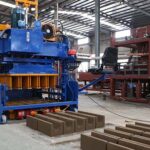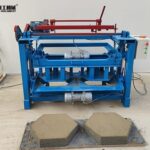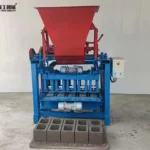Interlocking brick making machine is a specialized device designed to manufacture bricks with unique interlocking mechanisms. Interlocking bricks are modular building units designed with a unique shape that allows them to fit together like puzzle pieces. Unlike conventional bricks, which require mortar to bind them, interlocking bricks rely on their geometric design to create a self-locking structure. This design reduces labor costs, speeds up construction, and minimizes material waste. The bricks are typically made from a mixture of soil, cement, sand, and water, making them an eco-friendly alternative to fired clay bricks.
How Does An Interlocking Brick Making Machine Work?
Material Preparation: Raw materials like soil, cement, and sand are mixed in precise ratios. Additives such as stabilizers may be included to enhance durability.
Feeding the Machine: The mixture is fed into the machine’s hopper, which distributes it evenly into molds.
Compression: Hydraulic or mechanical pressure is applied to compress the mixture, ensuring high density and strength.
Demolding: Once compressed, the bricks are ejected from the molds onto a conveyor belt or pallet.
Factors to Consider When Choosing An Brick Making Machine
- Production Capacity
Assess your project requirements. Small-scale interlocking brick making machine users may opt for manual machines, while industrial players need high-output automatic systems. - Power Source
Choose between electric, diesel, or hybrid models based on local infrastructure and fuel availability. - Durability and Maintenance
Opt for machines with stainless steel components and easy-access panels for routine maintenance.
Benefits of Using A Brick Making Machine
- Cost Efficiency
By eliminating the need for mortar, interlocking bricks reduce material costs. Additionally, the machines’ ability to use locally sourced materials further lowers expenses, reducing labor requirements, contributing to overall cost savings. - Speed and Productivity
Traditional bricklaying is time-consuming, but interlocking bricks simplify the construction process. Their design allows for quick assembly, accelerating project timelines. Moreover, high-capacity machines can produce thousands of bricks daily, ensuring a steady supply for large developments. - Durability and Strength
The compression process used by interlocking brick making machines results in dense, robust bricks resistant to weathering, erosion, and seismic activity. Structures built with interlocking bricks exhibit enhanced longevity compared to conventional masonry.




